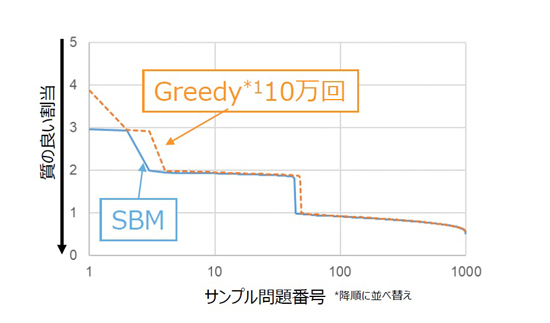Developing 5G resource control technology Toshiba

Toshiba has developed a resource control algorithm that allocates optimal time and frequency for 5G communication using its quantum-inspired optimization computer ”Simulated Branching Machine (SBM).” For the first time in the world, they succeeded in allocating resources to 20 terminals in less than 0.5 milliseconds, which is required to achieve a transmission delay of 1.0 milliseconds.
Although 5G is characterized by high speed, low latency, and multiple simultaneous connections, it has been difficult to allocate resources for simultaneous communication between multiple terminals with low latency within the 5G standards.
On the other hand, SBM enables optimal allocation that cannot be achieved by increasing the number of iterations of the Greedy algorithm.
The Greedy algorithm is an algorithm that determines the order of terminals and fills them with channels with the highest quality. It is a local optimum because it seeks the optimum at each stage, but it is simple and is widely used in scheduling algorithms.
Utilizing SBM creates an efficient communication environment that allows simultaneous communication with multiple terminals with low latency. This is expected to accelerate remote control and automation of industrial equipment at industrial and logistics sites such as factories and warehouses.
Toshiba plans to utilize this algorithm at various sites as mobile phone base stations and 5G are introduced.
